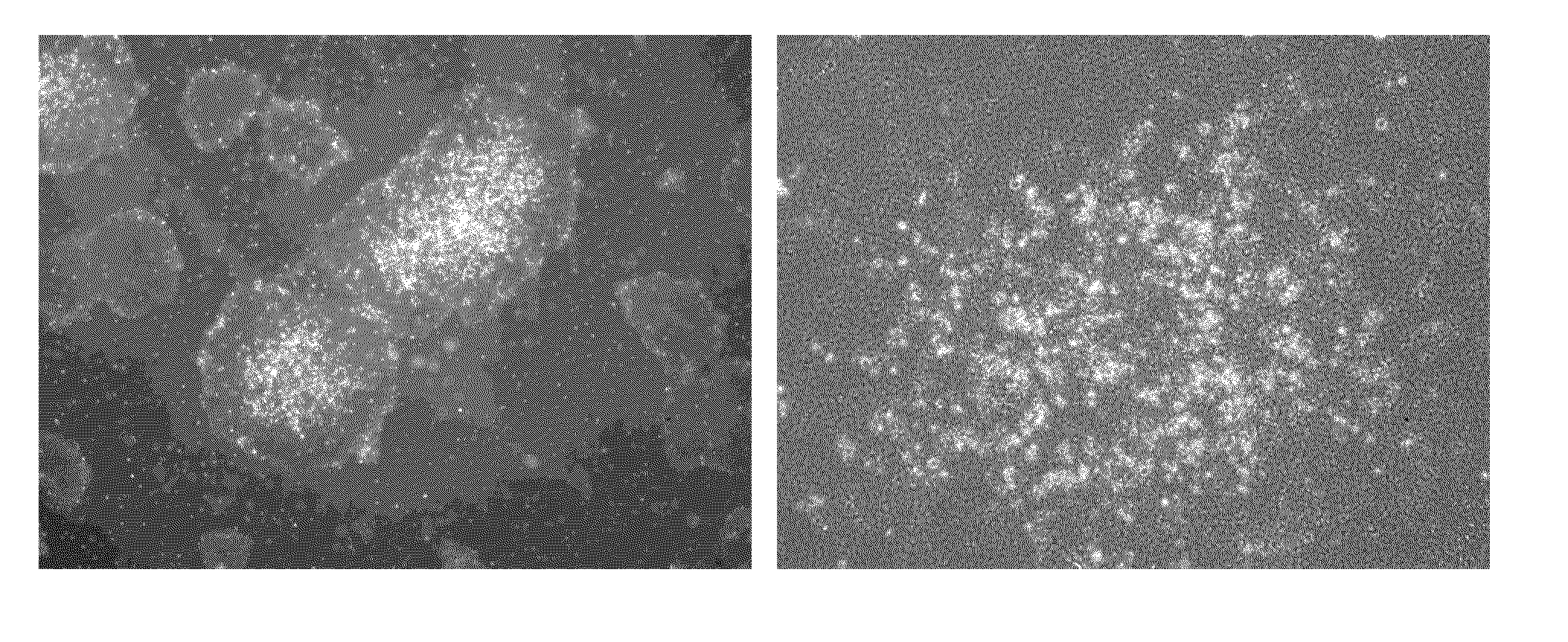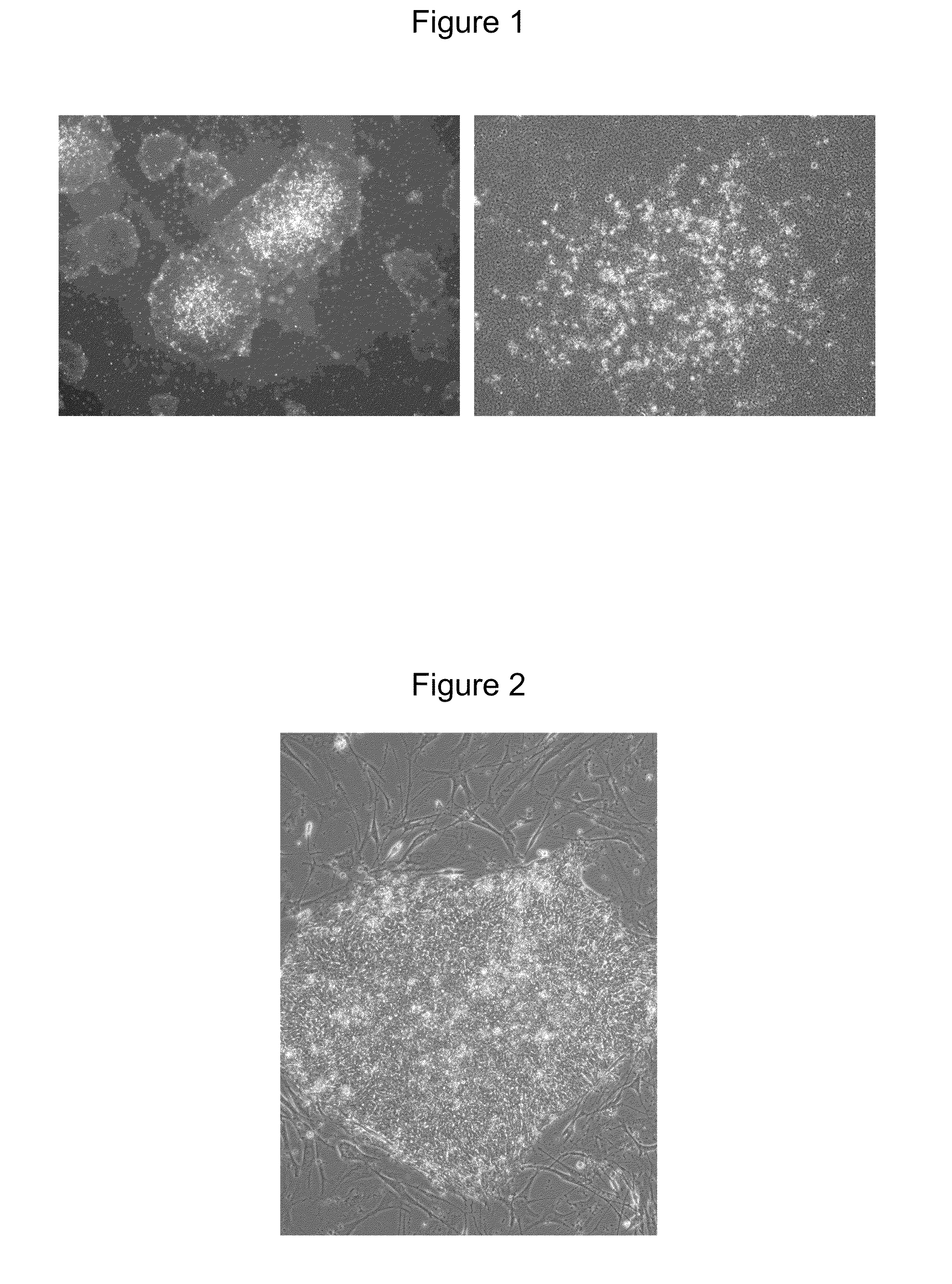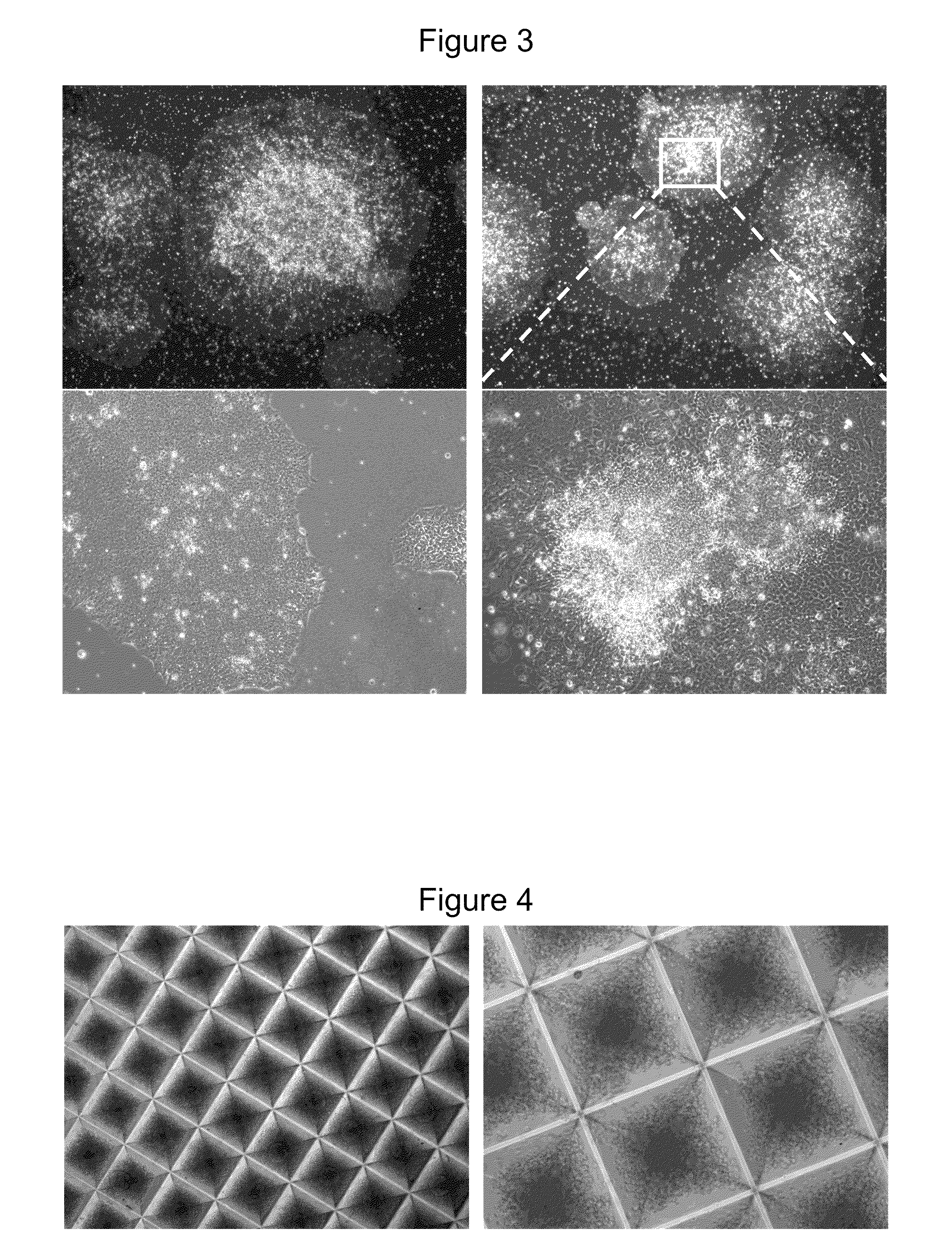Method of Differentiating Stem Cells
a stem cell and cell technology, applied in the field of stem cell differentiation, can solve the problems of high labor intensity, high labor intensity, and inability to provide detailed lists of individual components in culture medium and their working concentration, and achieve the effects of low labor intensity, high labor intensity, and high labor intensity
- Summary
- Abstract
- Description
- Claims
- Application Information
AI Technical Summary
Benefits of technology
Problems solved by technology
Method used
Image
Examples
example 1
Culture of Human Pluripotent Stem Cells as Aggregates in Defined Serum-Free Medium on BD Matrigel™ Coating
[0160]Human pluripotent cells were maintained on BD Matrigel™ coated dishes in defined serum-free medium. A detailed protocol can be found in manual # 29106“Maintenance of Human Embryonic Stem Cells in mTeSR®1” by STEMCELL TECHNOLOGIES INC. for the maintenance of human pluripotent stem cells which includes the procedure for BD Matrigel™ coating. Cells were passaged when the colonies were large, beginning to merge, and had centers that are dense and phase-bright compared to their edges (see FIG. 1). Depending on the size and density of seeded aggregates, cultures were passaged 5-7 days after initial seeding.
[0161]Medium was aspirated from the stem cell culture and cells were rinsed with DMEM / F-12 (2 mL / well). 1 mL of dispase (STEMCELL TECHNOLOGIES INC. catalogue # 07923) was added per well at a concentration of 1 mg / mL. The dish was placed at 37° C. for 7 minutes.
[0162]Once the c...
example 2
Preparation of Mouse Embryonic Fibroblast Layers (Mefs) for maintenance cultures of hES cells
[0167]Irradiated embryonic day 13 mouse embryonic fibroblasts (MEF's) (CF-1 mouse strain) were prepared according to standard protocols (WiCell Research Institute web page: https: / / www.wicell.org and Dravid et al., Human Embryonic Stem Cell Protocols, Humana press). The day prior to plating human pluripotent stem cells onto the MEFs, a vial of irradiated MEFs was thawed into standard “MEF-medium” according to the WiCell Research Institute's standard protocols. Approximately 2×104 cells / cm2, which corresponds to approximately 2×105 cells per 6-well, were plated. FIG. 2 shows hESCs cultured on MEFs at day 4.
example 3
Culture of Human Pluripotent Stem Cells on Mouse Feeder Cells
[0168]Human pluripotent stem cells maintained on mouse feeder cells can also be used as a consistent source of cells for the differentiation protocols in this disclosure.
[0169]H9 hESCs were grown on MEF's (see Example 2) in hESC medium (DMEM-F12 (STEMCELL TECHNOLOGIES INC., catalog #36254), 25% knock-out serum replacer (Invitrogen, catalog #10828028), 200 mM L-glutamine (Invitrogen, catalog #25030081), 0.1 mM β-mercaptoethanol (Sigma, catalog #63689), 1×NEAA solution (Invitrogen, catalog #11140050), 4 ng / ml bFGF (STEMCELL TECHNOLOGIES INC., catalog #02634) according to the WiCell Research Institute's standard protocols which can be found on the WiCell Research Institute web page (https: / / www.wicell.org) and Dravid et al., Human Embryonic Stem Cell Protocols, Humana press).
[0170]Briefly, cells were split when the feeder layer was more than 2 weeks old; colonies started to merge or became large with dense centers. For passag...
PUM
 Login to View More
Login to View More Abstract
Description
Claims
Application Information
 Login to View More
Login to View More - R&D
- Intellectual Property
- Life Sciences
- Materials
- Tech Scout
- Unparalleled Data Quality
- Higher Quality Content
- 60% Fewer Hallucinations
Browse by: Latest US Patents, China's latest patents, Technical Efficacy Thesaurus, Application Domain, Technology Topic, Popular Technical Reports.
© 2025 PatSnap. All rights reserved.Legal|Privacy policy|Modern Slavery Act Transparency Statement|Sitemap|About US| Contact US: help@patsnap.com



